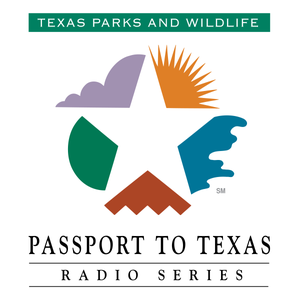
Passport to Texas
Cecilia Nasti/Texas Parks and Wildlife Department
- 1 secondStart the New Year with a First Day Hike
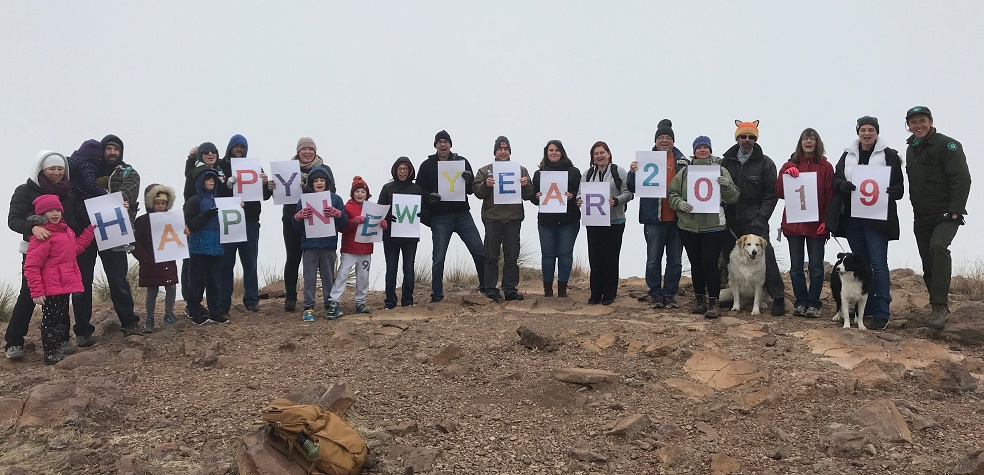
2019 First Day Hike at Davis Mountains State Park
This is Passport to Texas
If one of your resolutions is to sit less and move more in the New Year, may I suggest a First Day Hike to start things right.
First Day Hikes is a nationwide initiative that Texas State Parks has been participating in for the last several years.
Thomas Wilhelm is with state parks. He says many Texas state parks host First Day Hike Events. First day hikes have become a positive way for Texans to begin the New Year on the right foot…and left foot.
Essentially, it’s the concept of getting outside on January first, and doing something to kick the year off right. So, almost all of our parks have some sort of first day hike. A few of our parks take it a unique way. But many of our parks do have those first day hikes. And they’re, of course, guided hikes with a park ranger. And it’s just a way to start the year off right on the good foot. Literally.
You don’t have to go on a guided hike …or hike at all. How about a first day sunset stroll, or bike ride or paddle on a paddling trail or a first day birding outing? Make the first day of January the start of your best year.
Find a First Day Hike near you at texasstateparks.org. While you’re there check out other opportunities like Dutch oven cooking, stargazing, hikes with shelter dogs and more.
From everyone at Texas Parks and Wildlife and Passport to Texas—we wish you a Happy New Year!
And remember: Life’s Better Outside. I’m Cecilia Nasti.
31 December 2019, 6:00 am - 1 secondForgotten Species: Javelina
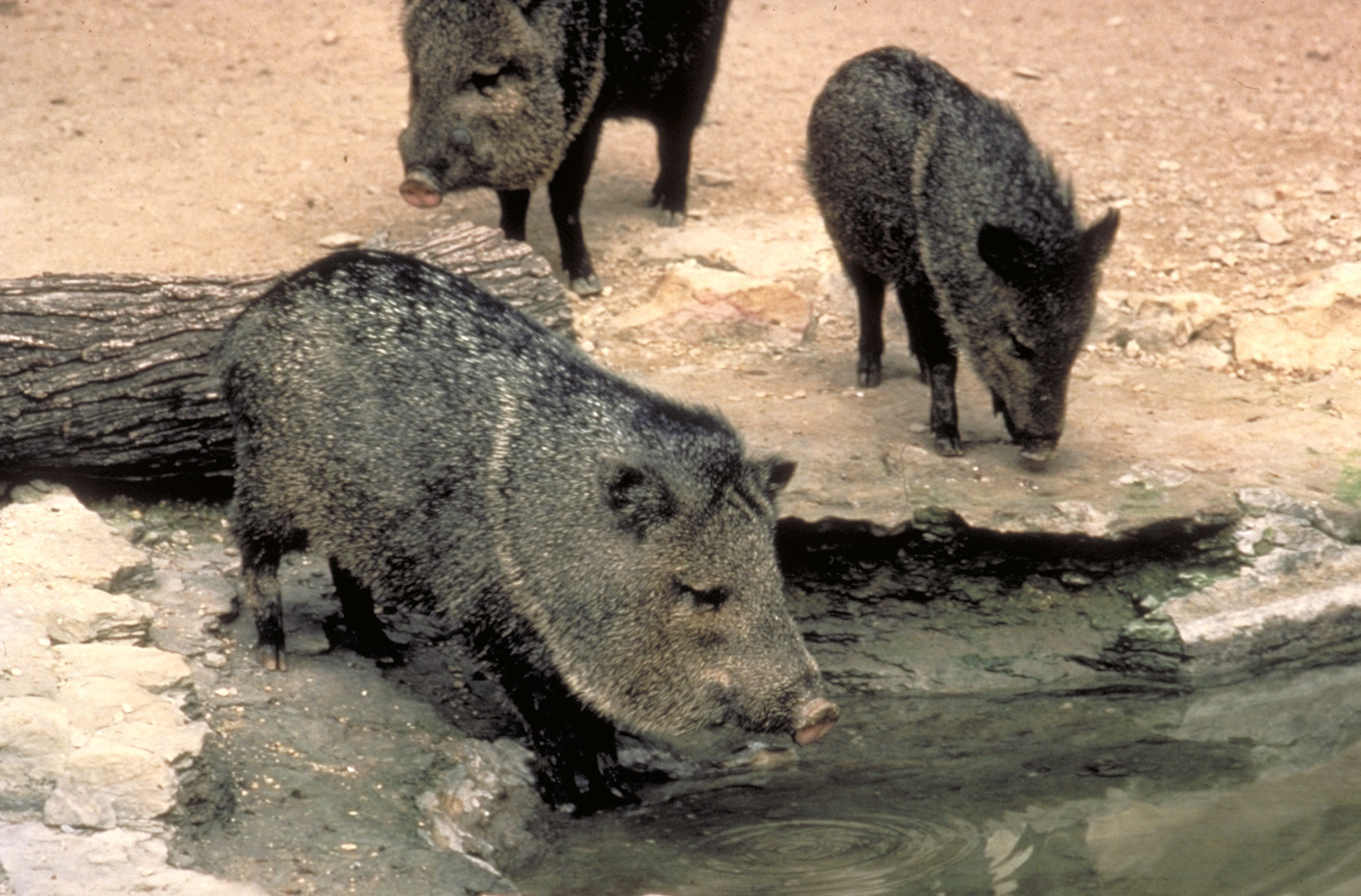
Javelina Happy Hour
This is Passport to Texas
Javelina, also called Collared Peccary, is a Texas native and lives in scrubby and arid regions of the state. Similar to hogs in appearance, they are not related. But mistaken identity doesn’t change their value in the ecosystem.
Javelina play a great role in nature, because they are an additional prey species for some of the predators out there.
Texas Parks and Wildlife biologist Froylan Hernandez explains why it’s important to keep track of the Javelina population.
Having Javelina out on the landscape is a sign of a healthy ecosystem. When you see declining populations that could also be a sign of declining habitat or degrading habitat and so they play an important role not just as a prey species but also an indicator of a good healthy system.
While Javelina act as an important indicator species, Froylan believes Javelina don’t always get the respect they deserve.
I like to call them the forgotten species, because they are seen often times as a pest or a nuisance species. You know they deserve the same type of respect as lets say a big whitetail would or a big mule deer.
Javelina have gained a stable population in Texas. Perhaps they’ll gain a little more respect as well.
The Wildlife Restoration program supports our series and funds Javelina research in Texas
For Texas Parks and Wildlife…I’m Cecilia Nasti.
26 December 2019, 6:00 am - 1 secondForest Bathing
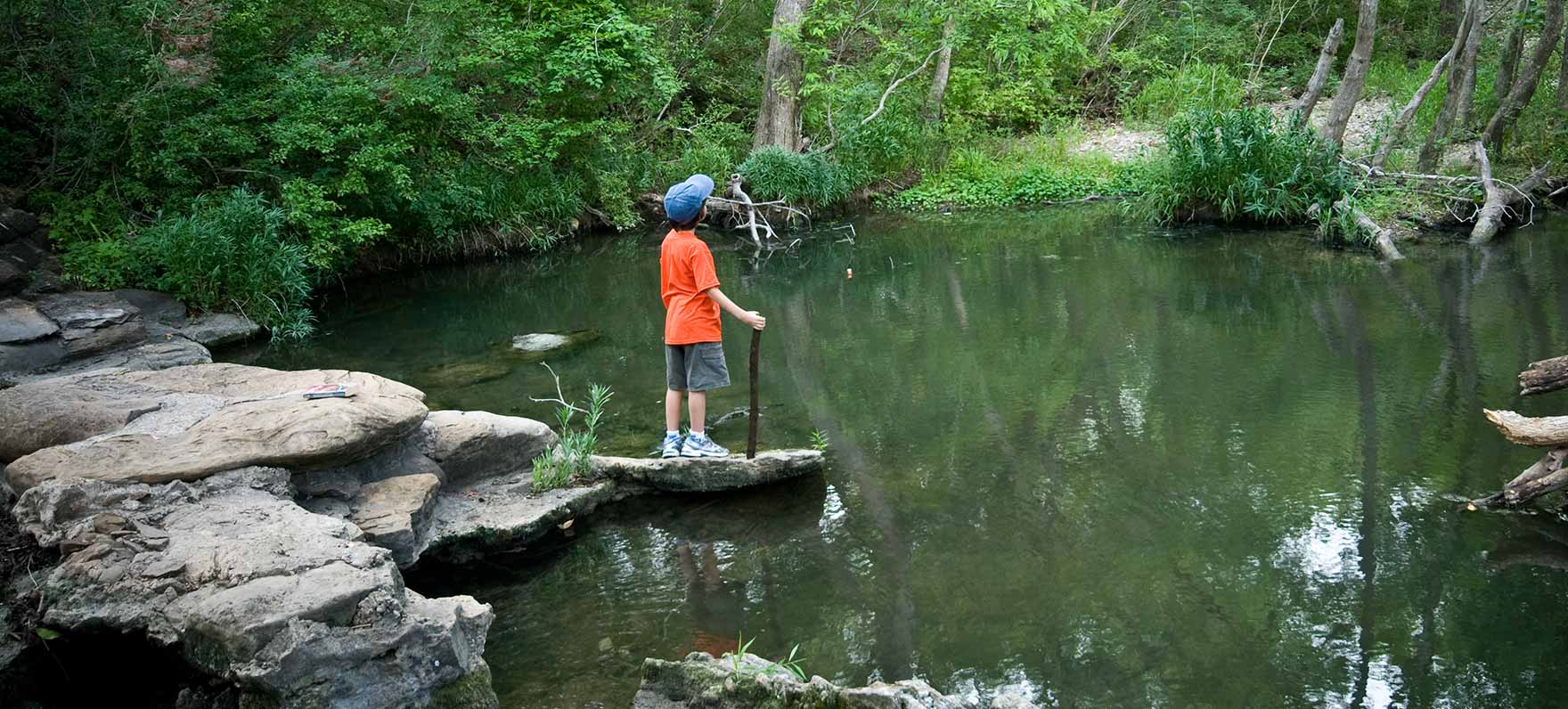
A moment of meditation at Lockhart State Park
This is Passport to Texas
An inspired Park Ranger at Lockhart State Park is introducing visitors to a Japanese practice called Shinrin yoku, or forest bathing.
Forest bathing is bathing in the forest atmosphere.
Lauren Hartwick first offered the program this past February.
So, we’re going to be soaking in the leaves and the trees and the sunshine and doing activities centered on your five senses. We’ll explore the sights of the forest the touches and smells of the forest and, at each of the stops, we’re going to have an activity to get us in tune deeper with the woods around us.
At each stop, a few minutes of guided meditation is followed by observation and quiet reflection without the noise, glare and distractions of modern life.
More and more research comes out every day that there are tons of benefits to spending time in nature. That forest bathing can reduce your blood pressure, lower stress, lift depression, etcetera, etcetera, etcetera
The practice has been gaining popularity around the world since the 1980’s.
I’m hoping that it continues to catch on and people start really becoming aware of all of the health benefits. People need nature to be happy and you can be your best self by spending some time regularly in nature.
Go to our website and check the calendar for this and dozens of interesting programs at state parks near you.
For Texas Parks and Wildlife, I’m Cecilia Nasti.
25 December 2019, 6:00 am - 1 secondDesigning with Nature in Mind
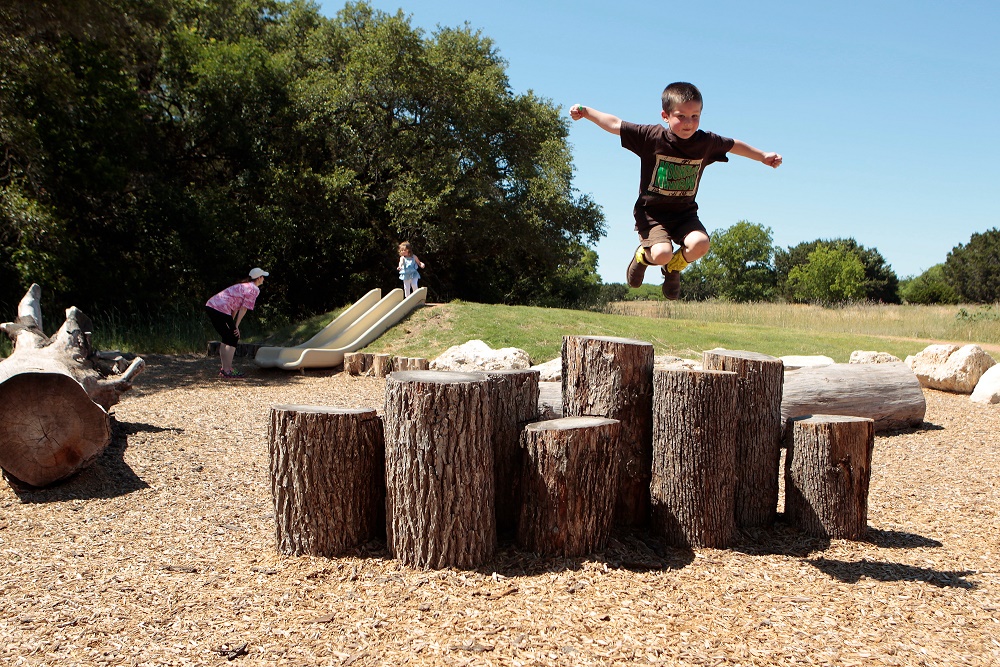
Nature’s Playscape
This is Passport to Texas
Thoughtful design plays a key role in meeting the conservation goals of Texas Parks and Wildlife.
We are an agency that says: “Life’s better outside.” So, how does that translate into how we make buildings and sites.
Christy Seals is an Architect with Texas Parks and wildlife
Building less, building simpler, this idea of a building as “shelter” instead of a hermetically sealed envelope … I had a professor at school that talked about climate control in a building as: “Well, you should start first by putting on your jumper” … and, then go to condition systems.
Park structures must also be long-lasting, robust and low maintenance.
I would say, sustainability and resiliency is really at the core of how we need to be thinking about our facilities. It starts with these passive solutions. What is the building made of? Is it sited appropriately? Do we use the wind and sun and rain to our advantage?
There’s also an opportunity to educate.
We also, I think, have a duty to interpret these things that we do for sustainability or resiliency so that we are showing the visitors something that they might do in their own lives or something we are doing for a reason of energy conservation.
Astute choices can conserve resources, reduce utility costs and create more resilient facilities.
For Texas Parks and Wildlife…I’m Cecilia Nasti.
24 December 2019, 6:00 am - 1 secondButterfly Walks in the Rio Grande Valley
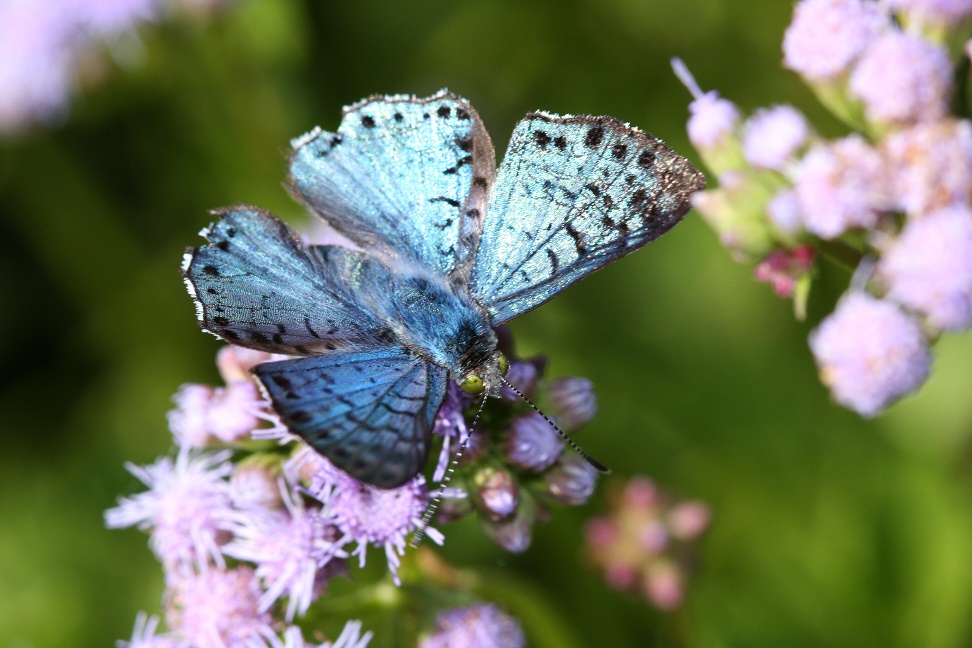
Blue Metalmark: This beautiful blue butterfly is often spotted in the butterfly garden at Resaca de la Palma State Park, and is one of the butterflies that makes the site unique.
This is Passport to Texas
Butterflies…. They flit. They flutter. And, Resaca de la Palma State Park is one of the best places to witness their flight.
The Rio Grande valley is one of the most ecologically diverse places in the world.
Kelly Ann Cummins is a Park Ranger Interpreter at Resaca de la Palma State Park.
She says, we’re fortunate as that level of diversity is what attracts and provides habitat for a lot of our interesting animals both insects, butterflies and wildlife.
Kelly says the park will see about 150 butterfly species during the year. A total of 300 are either residential or will migrate through the Rio Grande valley annually.
Coming here is a spoil of riches. Like some of the rarest butterfly types in north America you see them in parking lots, you see them in city parks, you see them in this park. A great way for folks to learn more, to be more engaged with what they are seeing is to come to a program.
The best time to go on a butterfly walk, says Kelly, is generally the afternoon. The later in the afternoon, the better. It’s a mellow activity and gives visitors the chance to focus and enjoy the beauty of being surrounded by maybe a couple thousand butterflies. But, it’s an opportunity to check in with the natural world and bet to enjoy the riches from the Rio Grande valley.
For more information, go to our website and search: Resaca de la Palma State Park.
For Texas Parks and Wildlife…I’m Cecilia Nasti.
19 December 2019, 6:00 am - 1 secondConsider the Golden-Cheeked Warbler
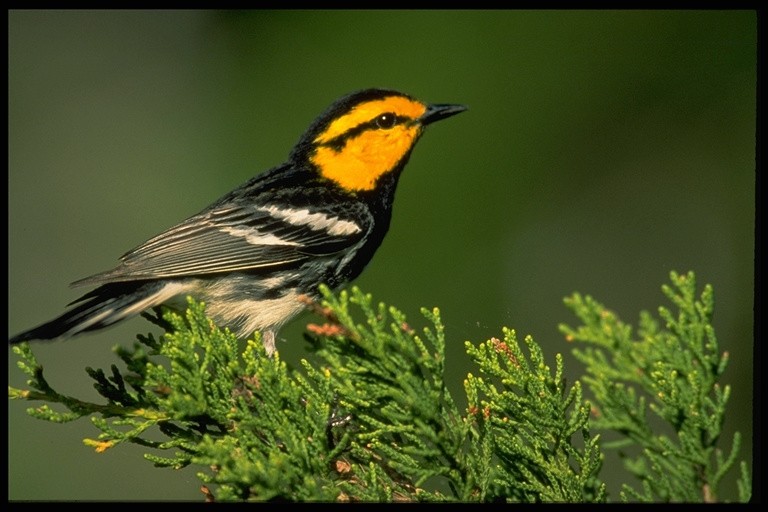
Golden-cheeked warbler
This is Passport to Texas
Hear that? That’s the Golden-cheeked warbler.
The Golden-cheeked Warbler is only in about 33 counties of Texas. It breeds nowhere else on the planet.
Texas Parks and Wildlife state ornithologist Cliff Shackelford says we can be very proud that this bird is endemic to Texas. But the Golden-cheeked Warbler remains on the federal endangered species list.
It’s been on the list for quite some time. There’s been talk about revisiting that. The data we have suggests that it’s fairly stable but not on a huge incline. There’s still a lot of challenges.
Challenges like the expanding human population into the Texas Hill Country. All too often the tall stands of Ashe-juniper and oak trees Golden-cheeked Warblers depend on are completely removed for development. But preserving native vegetation benefits both the species and the landowner.
Property value is greater when you leave old trees. When we leave that habitat we’re also protecting those hillsides from erosion. You’ve got vegetation holding the soil together. And so you’re not just leaving the habitat for this bird, you’re also helping your property in general.
Sounds like a win-win Cliff.
The Wildlife Restoration Program supports our series and funds Golden-cheeked Warbler research in Texas.
For Texas Parks and Wildlife…I’m Cecilia Nasti.
18 December 2019, 6:00 am - 1 secondKeep Your Distance from Colonial Waterbirds
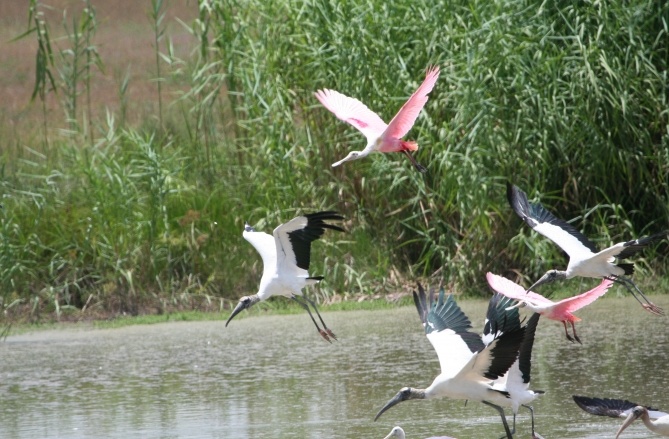
Roseate spoonbills & Woodstorks
This is Passport to Texas
Colonial Waterbirds gather on tiny islands dotted along the Texas Coast. Their beauty and diversity is attractive, but their populations have struggled over the years.
Colonial Waterbirds in the past experienced some pretty significant population declines.
Trey Barron is a Wildlife Diversity Biologist with Texas Parks and Wildlife.
A lot of the populations were down to almost nothing. Mainly due to overhunting. You know their feathers are very attractive and they were using them in stuff like hats.
Regulation changes and habitat improvements allowed many of the species to recover. But today there are new challenges like island erosion and exotic vegetation. Trey says one of the larger impacts, however, is human disturbance. Boaters, anglers and even photographers can get too close.
And they are disturbing these birds off of their nesting sites. Anytime that the birds get up, the young or the eggs are susceptible to predators. And some of those predators are other birds.
The more we can do to avoid disturbing these island habitats, the more successful Colonial Waterbirds can be.
The Wildlife Restoration Program supports our series and funds research for Colonial Waterbirds in Texas.
For Texas Parks and Wildlife…I’m Cecilia Nasti.
17 December 2019, 6:00 am - 1 secondHere Comes the Sun
![Running the board for a station that runs by the sun. [Image Courtesy of Sun Radio]](https://passporttotexas.org/wp-content/uploads/2019/10/intern_sun_radio.jpg)
Running the board for a station that runs on sun. [Image Courtesy of Sun Radio]
This is Passport to Texas
We all know that plants, wildlife and humans depend on energy from the sun to survive. TPWD even installed 25 solar photovoltaic systems at 17 of its own facilities.
But have you ever known a radio station run by the sun?
From the time the voice leaves the microphone until it gets to your listening device, it’s solar powered.
Sure, sure…this is off topic for our show, but—c’mon—to partner with nature to make radio is super cool. Daryl O’Neal is the executive director of Sun Radio, the first and largest non-commercial radio network powered by the sun.
We started looking around the landscape and noticed that all these small little non-commercial radio stations were off the air. We started trying to figure out okay well what if we could put them back on the air. Would it be a mission in doing that, bringing community radio back and what if we could also do it and be solar powered.
They are doing it: sending their signal to eleven different stations in Central Texas… but it’s not easy.
The real challenge we had is making sure that the solar power is consistent, because our equipment is very delicate. So, we had to put a lot of electric conditioning equipment in to make sure that DC feed that’s coming in is consistent. If you add up all of the kilowatts, it’s probably close to 75 to 80 thousand watts. Enough power on the ground to power the equipment in the air to send a signal out.
A signal that spreads like sunshine across Central Texas.
For Texas Parks and Wildlife…I’m Cecilia Nasti.
12 December 2019, 6:00 am - 1 secondRenewable Energy at TPWD
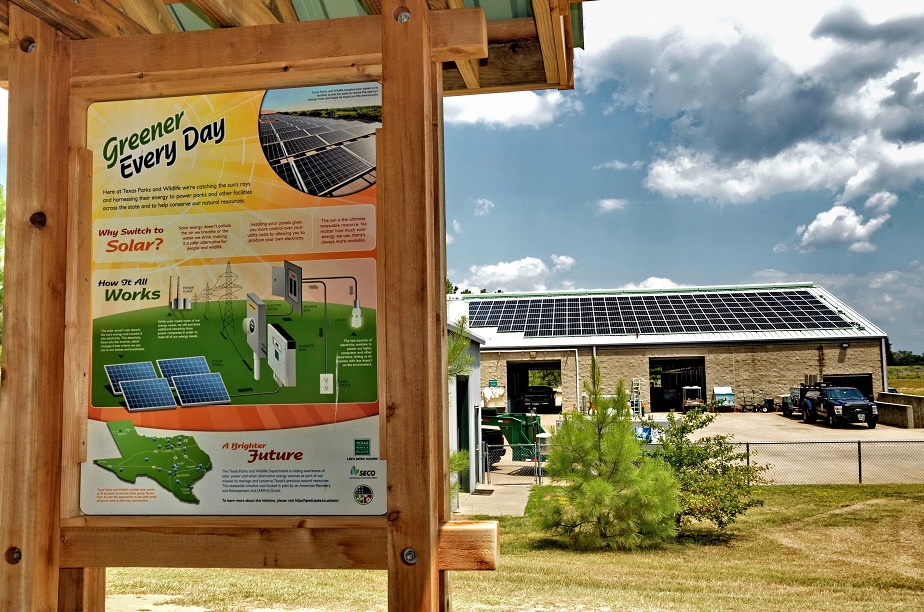
It’s getting easier to be green…
This is Passport to Texas
Texas Parks and Wildlife has been investigating renewable energy purchase options.
Through the State Energy Conservation Office there’s a group pulling together government entities to do a bulk purchase of renewable energy.
Andee Chamberlain is the Sustainability Program Manager at Texas Parks and Wildlife.
It’s really amazing our energy market in Texas, with all of the wind that is being produced, has really brought the renewable cost down. In the last contract that we negotiated, we looked at the cost of traditional energy vs renewable energy and the cost difference; about one percent. So it was negligible for us to choose renewable energy because it meets our mission.
The mission to “manage and conserve the resources of Texas for present and future generations” lends itself well to investment in renewable energy.
It makes a lot of sense for us to do that. All of the energy that we buy on the deregulated side is renewable; so that half of our sites are provided 100% renewable energy.
The bulk energy purchase contract will have a term of between ten and fifteen years.
That helps us not only support renewable energy but that helps us lock in a rate. And that’s really nice for parks to budget. Consistency is really important when your planning a park.
For Texas Parks and Wildlife…I’m Cecilia Nasti.
11 December 2019, 6:00 am - 1 secondSustainability at Parks and Wildlife
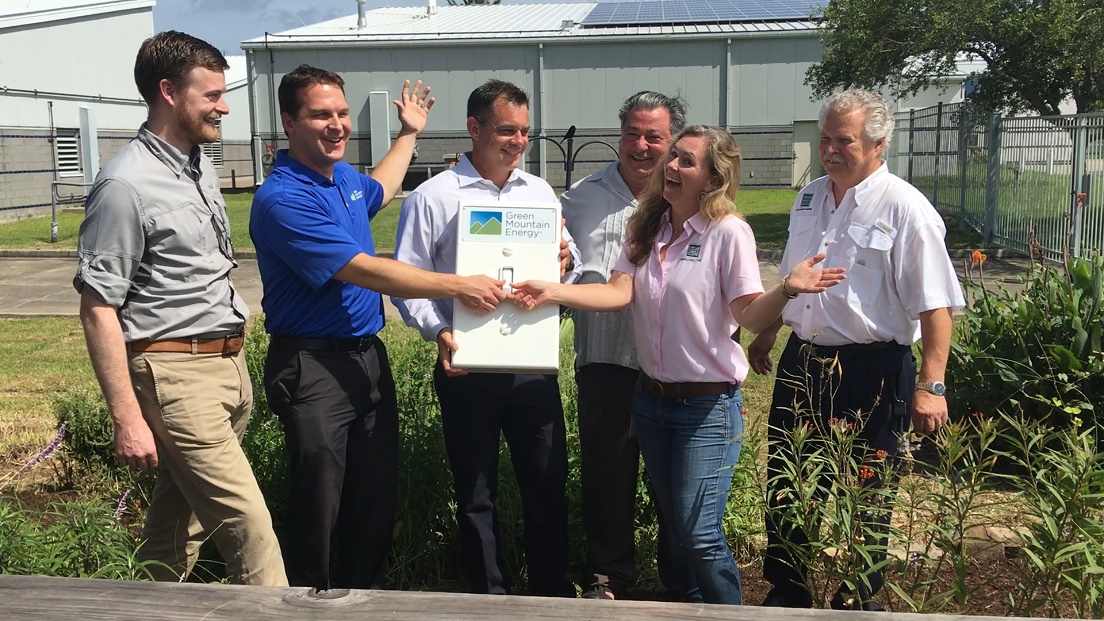
Turning on renewable energy with Green Mountain.
This is Passport to Texas
Since 2010 Texas Parks and Wildlife has been exploring renewable energy options such as solar and wind technologies
The state Energy Conservation office offered grants to state agencies who applied to install solar. They would pay for 80% of the project and we would pay for 20%.
Andee Chamberlain is the Sustainability Program Manager at Texas Parks and Wildlife.
It was just the right timing that we were able to apply for four separate grants totaling almost four million dollars. From that, we installed solar at over 20 facilities. Their utility bills went down, and that money is going back into the parks. And, those systems just keep operating. Once they are paid off, they keep providing benefits.
The agency has also investigated state-wide utility contacts serving sites in deregulated areas. In a deregulated market, the consumer chooses the retail provider.
So, we took that out to bid and Green Mountain Energy stepped up. We applied for a grant and got a solar installation at Enchanted Rock State Natural Area.
Additional grants provided funding to install solar equipment at Sea Center Texas; one of the agencies largest energy users.
What we’d rather do is spend money making parks more energy efficient so we use less operations dollars so we can redirect that money to offering a better experience for the park user.
For Texas Parks and Wildlife…I’m Cecilia Nasti.
10 December 2019, 6:00 am - More Episodes? Get the App
Your feedback is valuable to us. Should you encounter any bugs, glitches, lack of functionality or other problems, please email us on [email protected] or join Moon.FM Telegram Group where you can talk directly to the dev team who are happy to answer any queries.